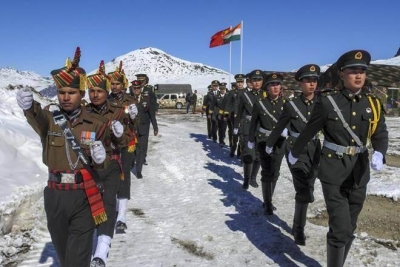
India and China have been engaged in a stand-off since April-May this year, over the transgressions by China’s People’s Liberation Army (PLA) in many areas along the Line of Actual Control (LAC) in east Ladakh, including the Galwan Valley, Gogra-Hot springs and Kongrung Nala. With China’s large-scale accumulation of troops near the Lac, many areas have been out of bounds for patrolling by Indian troops since May. Chinese troops are within India’s perception of the LAC in many parts of the region.
The situation worsened after 20 Indian soldiers were killed in violent clashes with Chinese troops along the LAC at Ladakh’s Galwan Valley on June 15. The clashes were said to have been triggered by China’s efforts to build structures on the Indian side of the LAC.
The LAC is the demarcation that separates Indian-controlled territory from Chinese-controlled territory. India considers the LAC to be 3,488 km long, while China considers it to be around 2,000 km. It is divided into three sectors: the eastern sector spinning Arunachal Pradesh and Sikkim, the middle sector in Uttarakhand and Himachal Pradesh, and the western sector in Ladakh.
India on September 8 thwarted an attempt by the Chinese army to transgress into Indian areas near the southern bank of Pangong Tso near Chushul in Ladakh. It also took control of the strategic height near Pangong Lake’s southern bank. The area also witnessed instances of firing in the air for the first time since 1975.
Recently, Defence Minister Rajnath Singh while making a statement in Parliament said that China had consistently boundaries and that the face-offs with the PLA took place as patrols were interrupted. With no commonly delineated LAC, there was an overlap with regard to the LAC’s perception in many areas, he said.
Incidentally, five Rafale fighter jets imported from France were inducted into the Golden Arrows squadron of the India Air Force on September 10.
Several rounds of talks between the two sides at various levels have been going on for the past few months, but have failed to yield results so far. India has made it clear that it would not de-escalate until there was complete and verifiable disengagement at all points on the LAC.
Apps ban
A little over a month after the Union government banned 59 Chinese apps, including TikTok, WeChat, Shareit and Cam Scanner, on June 29, citing a threat to the “sovereignty and integrity of India”, it banned another 47 apps developed in China, under the provisions of the Information Technology Act. They are believed to be clones of the 59 banned initially.
Picture Credit : Google




